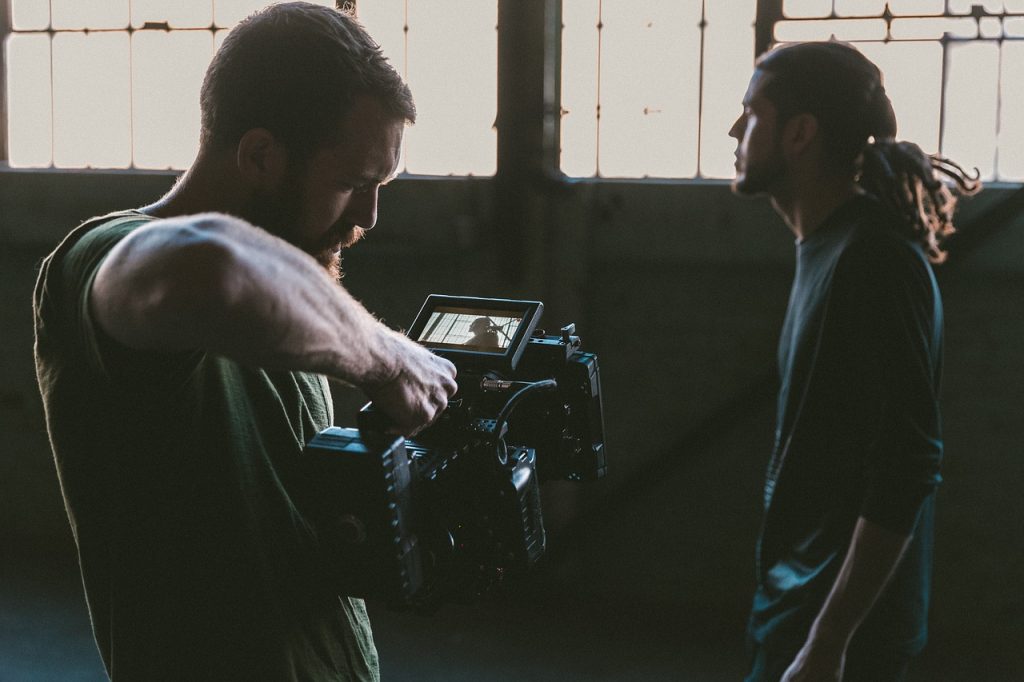(Article published in StudentFilmmakers Magazine.)
How to Motivate Your Light
Here’s How…
By Scott Spears
So, you arrive on set and look around at the space asking yourself, “Where do I start?” The answer to this question is what is motivating the light in the scene. Using motivated sources is the best way to go because the light makes sense to the audience and the world of the film. As a cinematographer, nothing takes me out of a scene than wondering where the heck a light source is coming from because it’s an unmotivated source. If an actor is in an elevator and they have a blazing backlight on them, that makes no sense to me and destroys the reality of the scene. Use a source that makes sense in the space and fits the mood of the scene.
Does your set, be it a set in a studio or an actual place, have windows or even a large window, and the scene takes place during the day? Boom, you have your main source, the window. Now you will have to decide if you’re going to depend on the natural light of the sun or you’re going to have placed a large light outside. If the scene is a long one, you will probably have to go for the big light as the sun will move and change over time. Once you have your main source established, then you can work on the fill light. If your set has white walls, you can bounce light.
If your scene takes place at night in a restaurant, what kind of motivated light sources would you find there. Now, this is when you can work with the art director or set dresser and add some small lamps or candles in the middle of the table. You can use the table lamps as a motivating source. You may have to put a more powerful bulb in the lamp to help get a little more
Illumination from it. Perhaps there is a chandelier on the ceiling which you can use to motivate a backlight for a character at the table or it can cast a pattern on the wall behind them.
Maybe you’re shooting in a bar that gives you all kinds of fun sources. Neon beer signs with red in them can allow you to have the red backlight on a character. A jukebox can add an under light for one of your characters who’s standing near it. I love putting a small LED light on the bar, just out of frame to give the characters some fill that could be coming from work lights in the actual bar.
As a cinematographer, you should always be paying attention as you move around the world and where ever you go, you should be taking notes or even pictures with your phone when you see real-world lighting that you can use later in life. I was eating in a restaurant I’ve seen a ray of light hit a menu being held by a woman and put the most beautiful light on the woman. It’s the true motivating source that I could recreate with a fresnel light on my next shoot.
One final note, you don’t have to be true to the real set and in that, I mean if you won’t see the whole room and you really want to add some source that doesn’t exist, you can add it, again as long as it makes sense in the real world but you have to work out the shots and blocking for the whole scene so that you won’t end up showing a space where the light you used for that one shot in the sequence and suddenly there’s a place that the light could have come from. If you want a window light and there isn’t one there but after talking with the director about the coverage on the scene and you learn that you’ll never see one of the walls, you can add one to your world and create the effect with a hunk of foam core with a window shape cut in it and fresnel to cast its shadow.
I’m a huge fan of motivated lighting and use it all the time in the films I shoot. It drives me crazy when I see what a cinematographer thought was a cool lighting effect that is totally unmotivated. It pulls me out of the story and as a cinematographer, you never want to do that so look at your set and use it to make your lighting fit the world of your film.






